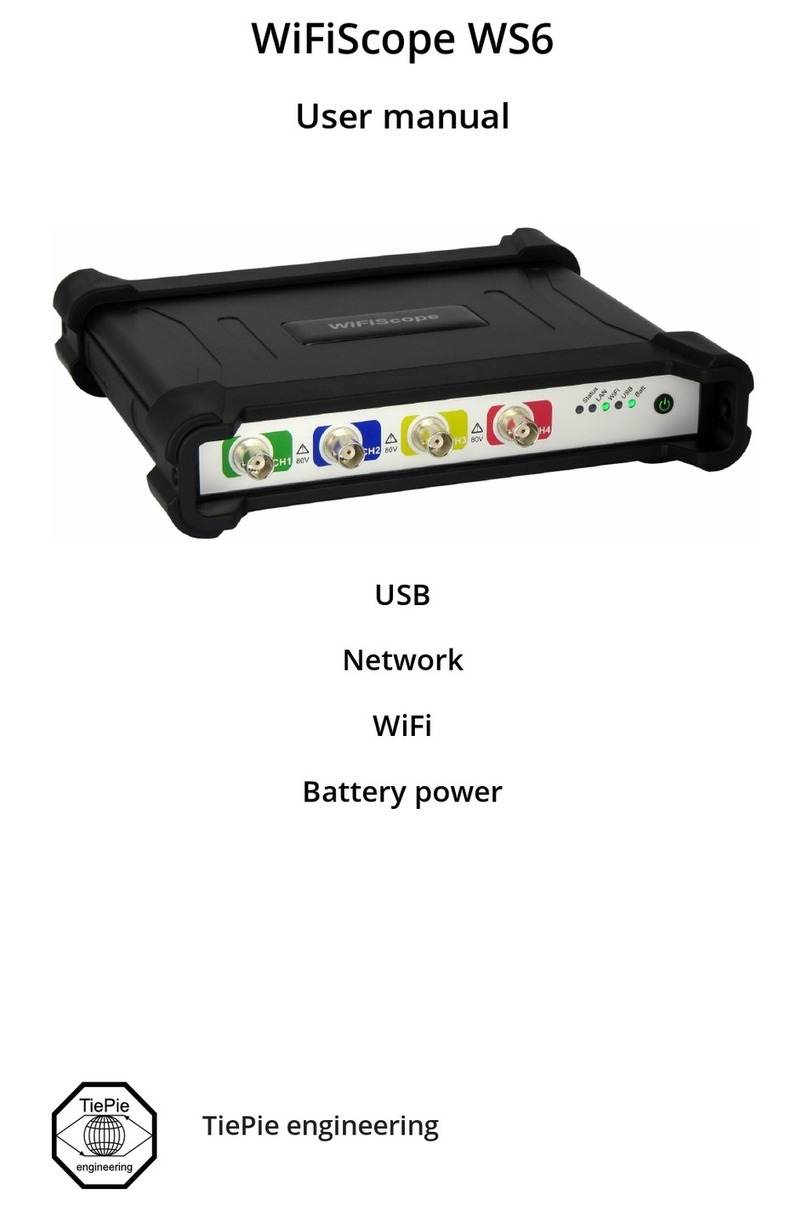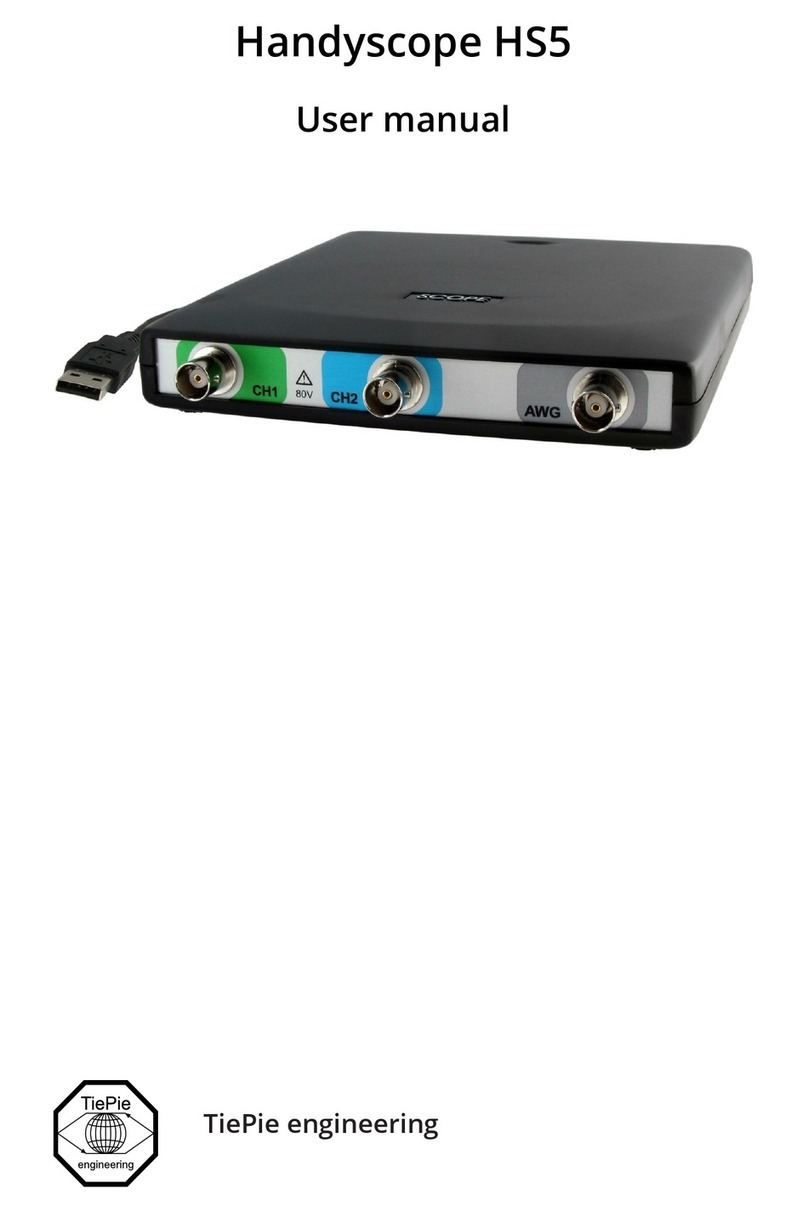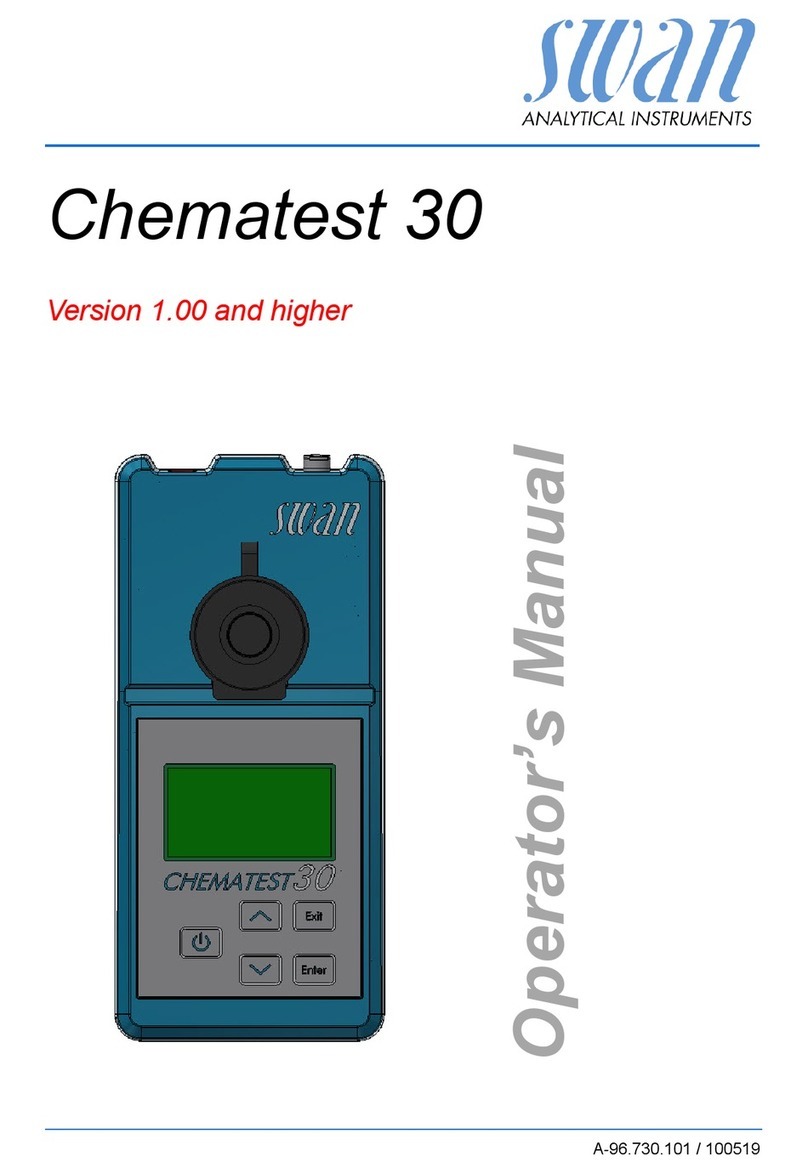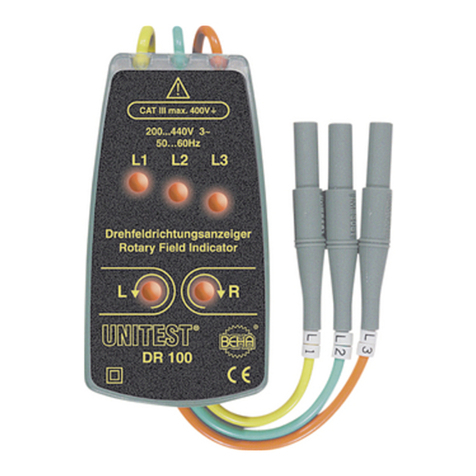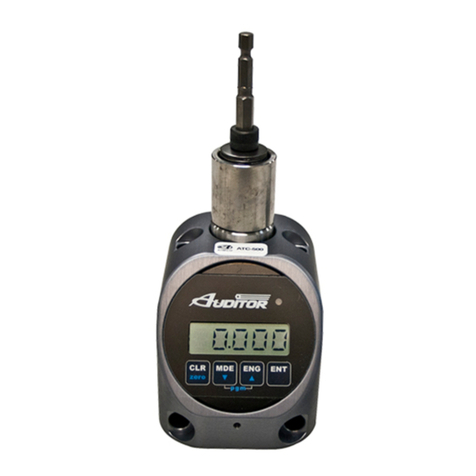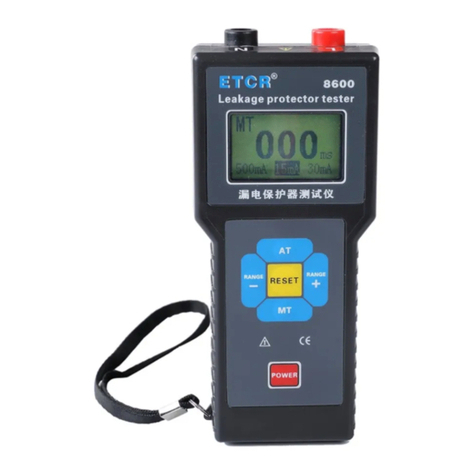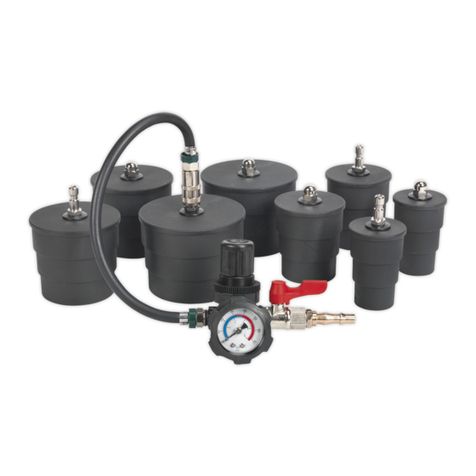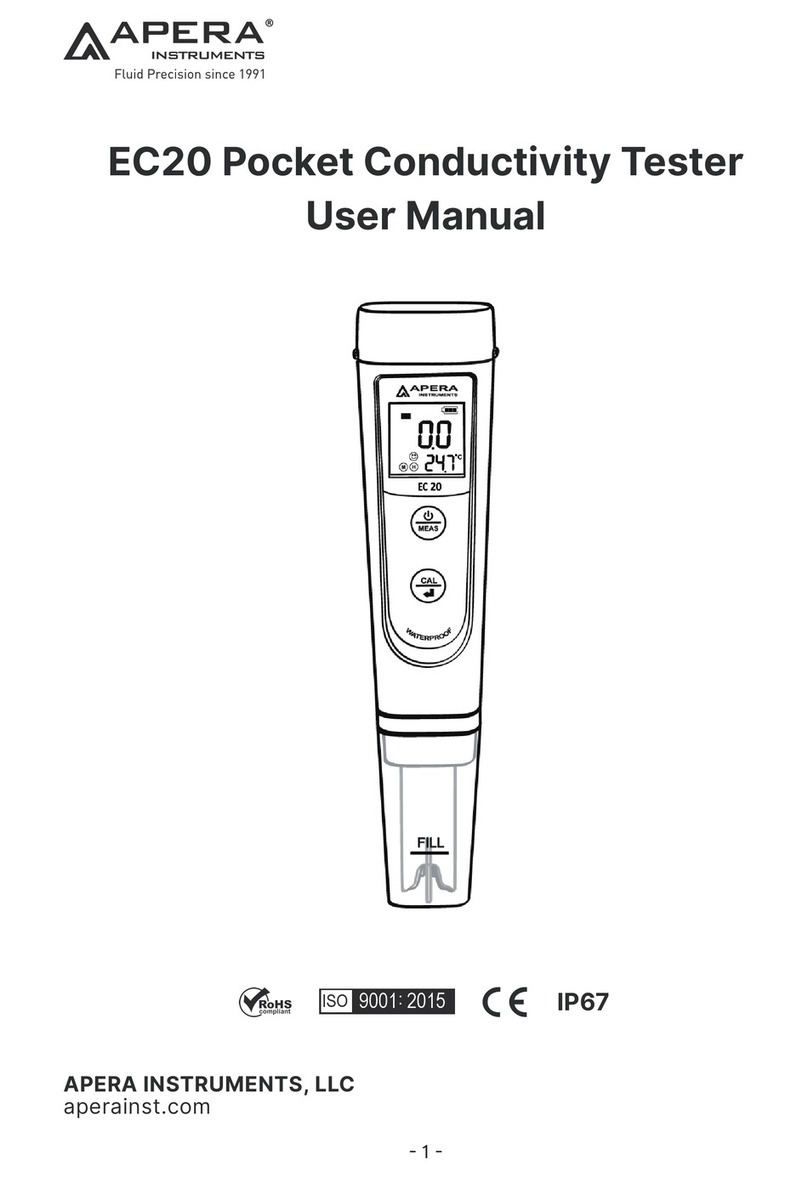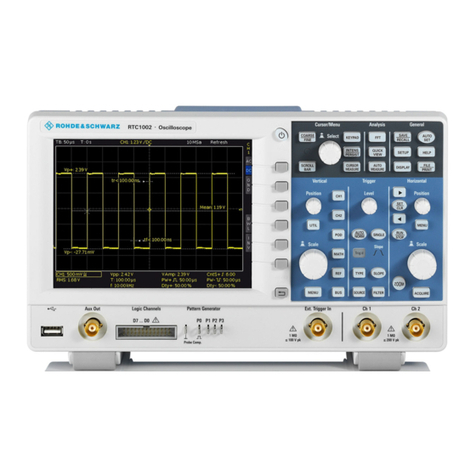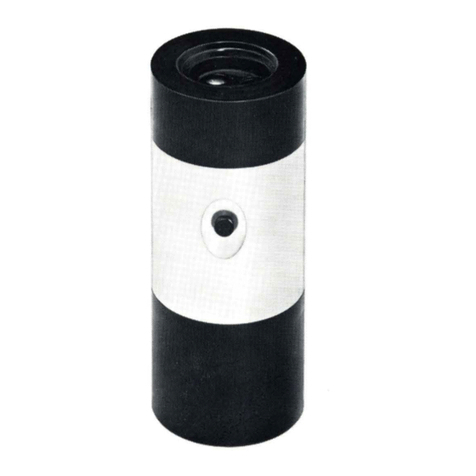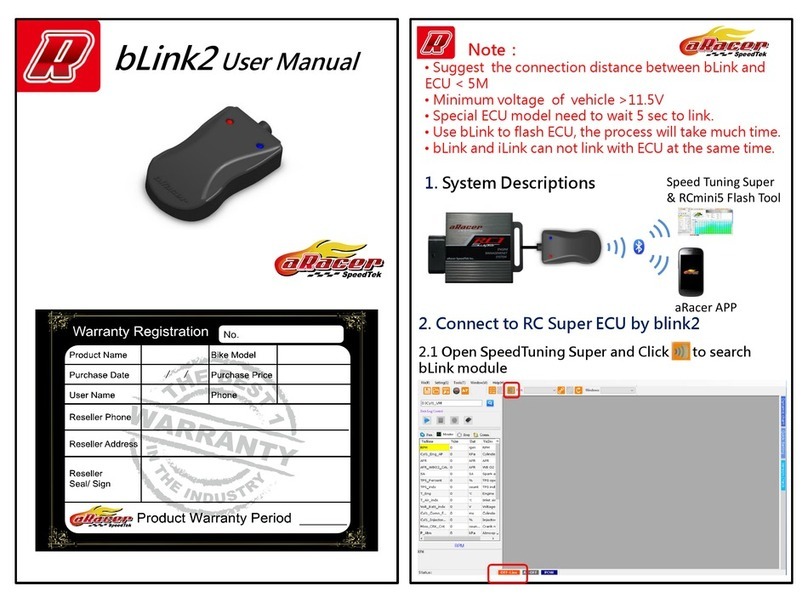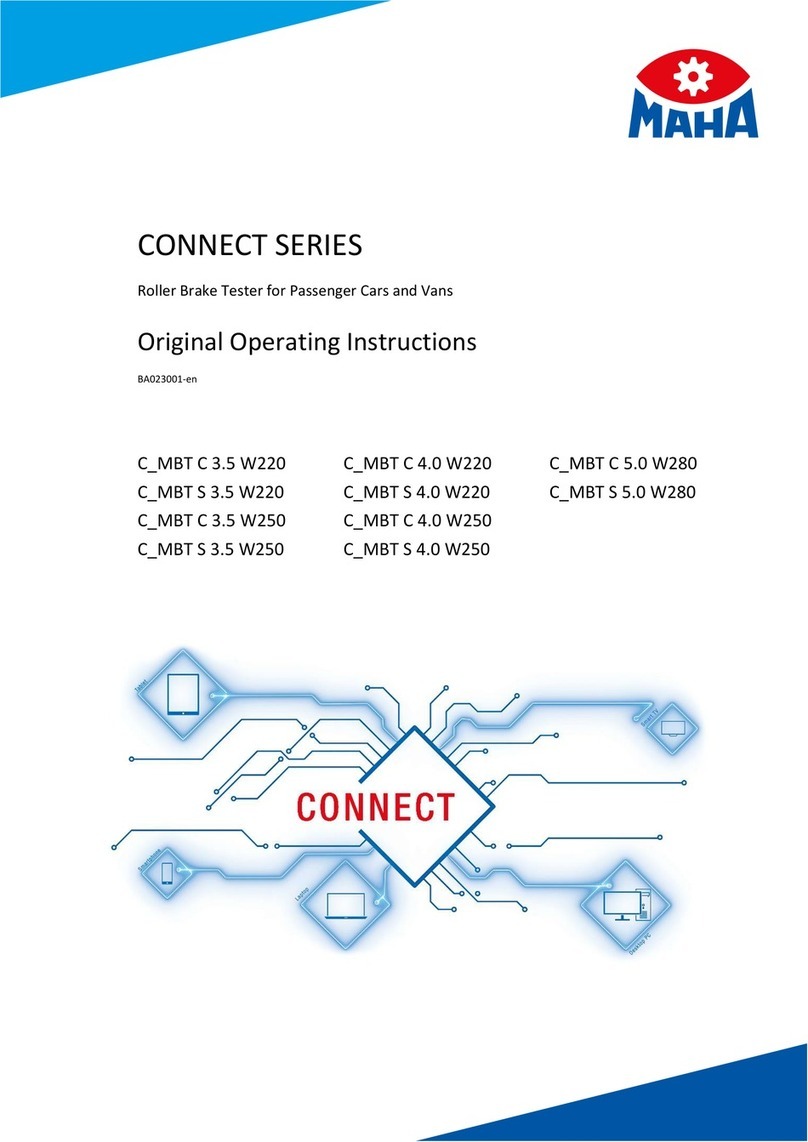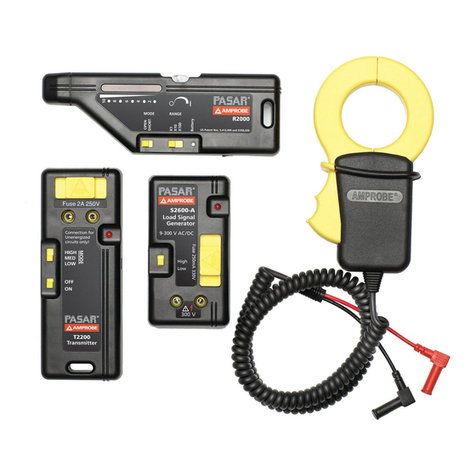TiePie Handyscope HS6 DIFF Series User manual

Handyscope HS6 DIFF
User manual
TiePie engineering

ATTENTION!
Measuring directly on the line voltage can be very dangerous.
Copyright ©2020 TiePie engineering.
All rights reserved.
Revision 2.27, February 2020
Despite the care taken for the compilation of this user man-
ual, TiePie engineering can not be held responsible for any
damage resulting from errors that may appear in this man-
ual.

Contents
1 Safety 1
2 Declaration of conformity 3
3 Introduction 5
3.1 Differential input ........................... 6
3.1.1 SafeGround on each channel ............... 8
3.1.2 Differential attenuators ................... 9
3.1.3 Differential test lead .................... 11
3.2 Sampling ................................ 11
3.3 Sampling rate ............................. 12
3.3.1 Aliasing ............................ 13
3.4 Digitizing ................................ 14
3.5 Signal coupling ............................ 15
3.6 Probe compensation ......................... 15
4 Driver installation 19
4.1 Introduction .............................. 19
4.2 Computers running Windows 10 .................. 19
4.3 Computers running Windows 8 or older .............. 19
4.3.1 Where to find the driver setup ............... 19
4.3.2 Executing the installation utility .............. 19
5 Hardware installation 23
5.1 Power the instrument ........................ 23
5.1.1 External power ....................... 23
5.2 Connect the instrument to the computer ............. 23
5.3 Plug into a different USB port .................... 24
5.4 Operating conditions ......................... 24
6 Combining instruments 25
7 Front panel 27
Contents I

7.1 Channel input connectors ...................... 27
7.2 Power indicator ............................ 27
8 Rear panel 29
8.1 Power ................................. 29
8.1.1 Power adapter ........................ 30
8.1.2 USB power cable ...................... 30
8.2 USB ................................... 30
8.3 Extension Connector ......................... 31
8.4 CMI ................................... 31
8.5 Ventilation slot ............................. 32
9 Specifications 33
9.1 Acquisition system .......................... 33
9.2 Acquisition system (continued) ................... 34
9.3 Trigger system ............................. 35
9.4 Power ................................. 35
9.5 Multi-instrument synchronization .................. 35
9.6 Probe calibration ........................... 35
9.7 Physical ................................. 36
9.8 I/O connectors ............................. 36
9.9 Interface ................................ 36
9.10 System requirements ......................... 36
9.11 Environmental conditions ...................... 36
9.12 Measure leads ............................. 37
9.13 Differential attenuators ........................ 37
9.14 Certifications and Compliances ................... 37
9.15 Package contents ........................... 38
II

Safety 1
When working with electricity, no instrument can guarantee complete safety.
It is the responsibility of the person who works with the instrument to op-
erate it in a safe way. Maximum security is achieved by selecting the proper
instruments and following safe working procedures. Safe working tips are
given below:
•Always work according (local) regulations.
•Work on installations with voltages higher than 25 VAC or 60 VDC should only
be performed by qualified personnel.
•Avoid working alone.
•Observe all indications on the Handyscope HS6 DIFF before connecting any
wiring
•Check the probes/test leads for damages. Do not use them if they are dam-
aged
•Take care when measuring at voltages higher than 25 VAC or 60 VDC.
•Do not operate the equipment in an explosive atmosphere or in the pres-
ence of flammable gases or fumes.
•Do not use the equipment if it does not operate properly. Have the equip-
ment inspected by qualified service personal. If necessary, return the equip-
ment to TiePie engineering for service and repair to ensure that safety fea-
tures are maintained.
Safety 1


Declaration of conformity 2
TiePie engineering
Koperslagersstraat 37
8601 WL Sneek
The Netherlands
EC Declaration of conformity
We declare, on our own responsibility, that the product
Handyscope HS6 DIFF-1000(XM/E/S/G)
Handyscope HS6 DIFF-500(XM/E/S/G)
Handyscope HS6 DIFF-200(XM/E/S/G)
Handyscope HS6 DIFF-100(XM/E/S/G)
Handyscope HS6 DIFF-50(XM/E/S/G)
for which this declaration is valid, is in compliance with
EC directive 2011/65/EU (the RoHS directive)
including up to amendement 2019/178,
and with
EN 55011:2016/A1:2017 IEC 61000-6-1:2019 EN
EN 55022:2011/C1:2011 IEC 61000-6-3:2007/A1:2011/C11:2012 EN
according the conditions of the EMC standard 2004/108/EC,
also with
Canada: ICES-001:2004 Australia/New Zealand: AS/NZS CISPR 11:2011
and
IEC 61010-1:2010/A1:2019 USA: UL 61010-1, Edition 3
and is categorized as 30 Vrms, 42 Vpk, 60 Vdc
Sneek, 1-3-2017
ir. A.P.W.M. Poelsma
Declaration of conformity 3

Environmental considerations
This section provides information about the environmental impact of the Handy-
scope HS6 DIFF.
End-of-life handling
Production of the Handyscope HS6 DIFF required the extraction and use
of natural resources. The equipment may contain substances that could
be harmful to the environment or human health if improperly handled
at the Handyscope HS6 DIFF’s end of life.
In order to avoid release of such substances into the environment and to reduce
the use of natural resources, recycle the Handyscope HS6 DIFF in an appropriate
system that will ensure that most of the materials are reused or recycled appro-
priately.
The shown symbol indicates that the Handyscope HS6 DIFF complies with the Eu-
ropean Union’s requirements according to Directive 2002/96/EC on waste electri-
cal and electronic equipment (WEEE).
4Chapter 2

Introduction 3
Before using the Handyscope HS6 DIFF first read chapter 1about safety.
Many technicians investigate electrical signals. Though the measurement may not
be electrical, the physical variable is often converted to an electrical signal, with
a special transducer. Common transducers are accelerometers, pressure probes,
current clamps and temperature probes. The advantages of converting the phys-
ical parameters to electrical signals are large, since many instruments for examin-
ing electrical signals are available.
The Handyscope HS6 DIFF is a portable four channel measuring instrument with
differential inputs. It is available in several models with different maximum sam-
pling rates. The native resolutions are 8, 12 and 14 bits and a user selectable res-
olution of 16 bits is available too, with adjusted maximum sampling rates:
Measuring Model
Resolution Channels HS6D-1000 HS6D-500 HS6D-200 HS6D-100 HS6D-50
8 bit
1 ch 1 GSa/s 500 MSa/s 200 MSa/s 100 MSa/s 50 MSa/s
2 ch 500 MSa/s 200 MSa/s 100 MSa/s 50 MSa/s 20 MSa/s
3 or 4 ch 200 MSa/s 100 MSa/s 50 MSa/s 20 MSa/s 10 MSa/s
12 bit
1 ch 500 MSa/s 200 MSa/s 100 MSa/s 50 MSa/s 20 MSa/s
2 ch 200 MSa/s 100 MSa/s 50 MSa/s 20 MSa/s 10 MSa/s
3 or 4 ch 100 MSa/s 50 MSa/s 20 MSa/s 10 MSa/s 5 MSa/s
14 bit 100 MSa/s 50 MSa/s 20 MSa/s 10 MSa/s 5 MSa/s
16 bit 6.25 MSa/s 3.125 MSa/s 1.25 MSa/s 625 kSa/s 312.5 kSa/s
Table 3.1: Maximum sampling rates
The Handyscope HS6 DIFF is available with two memory configurations, these are:
Measuring Model
Resolution Channels Standard with XM option
8 bit
1 ch 1 MSa 256 MSa
2 ch 512 KSa 128 MSa
3 or 4 ch 256 KSa 64 MSa
12, 14, 16 bit
1 ch 512 KSa 128 MSa
2 ch 256 KSa 64 MSa
3 or 4 ch 128 KSa 32 MSa
Table 3.2: Maximum record lengths per channel
The Handyscope HS6 DIFF supports high speed continuous streaming measure-
ments. The maximum streaming rates when connected to a USB 3.0 port are:
Introduction 5

Measuring Model
Resolution Channels HS6D-1000 HS6D-500 HS6D-200 HS6D-100 HS6D-50
8 bit
1 ch 200 MSa/s1100 MSa/s140 MSa/s 20 MSa/s 10 MSa/s
2 ch 100 MSa/s250 MSa/s220 MSa/s 10 MSa/s 5 MSa/s
3 or 4 ch 50 MSa/s325 MSa/s310 MSa/s 5 MSa/s 2.5 MSa/s
12 bit
1 ch 100 MSa/s250 MSa/s220 MSa/s 10 MSa/s 5 MSa/s
2 ch 50 MSa/s325 MSa/s310 MSa/s 5 MSa/s 2.5 MSa/s
3 or 4 ch 25 MSa/s412.5 MSa/s45 MSa/s 2.5 MSa/s 1.25 MSa/s
14 bit
1 ch 100 MSa/s250 MSa/s220 MSa/s 10 MSa/s 5 MSa/s
2 ch 50 MSa/s325 MSa/s310 MSa/s 5 MSa/s 2.5 MSa/s
3 or 4 ch 25 MSa/s412.5 MSa/s45 MSa/s 2.5 MSa/s 1.25 MSa/s
16 bit 6.25 MSa/s53.125 MSa/s 1.25 MSa/s 625 kSa/s 312.5 kSa/s
Table 3.3: Maximum streaming rates
1≤40 MSa/s when connected to USB 2.0
2≤20 MSa/s when connected to USB 2.0
3≤10 MSa/s when connected to USB 2.0
4≤5 MSa/s when connected to USB 2.0
5≤3.125 MSa/s when connected to USB 2.0, measuring 3 or 4 channels
Optionally available for the Handyscope HS6 DIFF is SureConnect con-
nection test. SureConnect connection test tells you immediately whether
your test probe or clip actually makes electrical contact or not. No more doubt
whether your probe doesn’t make contact or there really is no signal. This is useful
when surfaces are oxidized and your probe cannot get a good electrical contact.
Simply activate the SureConnect and you know whether there is contact or not.
Also when back probing connectors in confined places, SureConnect immediately
shows whether the probes make contact or not.
Models of the Handyscope HS6 DIFF with SureConnect come with re-
sistance measurement on all channels. Resistances up to 2 MOhm can
be measured directly. Resistance can be shown in meter displays and can also be
plotted versus time in a graph, creating an Ohm scope.
With the SafeGround protected ground option, the differential input of the
Handyscope HS6 DIFF is switched into a ground current protected single
ended input. This allows to perform single ended measurements with e.g. an at-
tenuating oscilloscope probe, without the risk of creating a short ciruit to ground.
With the accompanying software the Handyscope HS6 DIFF can be used as an
oscilloscope, a spectrum analyzer, a true RMS voltmeter or a transient recorder. All
instruments measure by sampling the input signals, digitizing the values, process
them, save them and display them.
3.1 Differential input
Most oscilloscopes are equipped with standard, single ended inputs, which are
referenced to ground. This means that one side of the input is always connected
to ground and the other side to the point of interest in the circuit under test.
6Chapter 3

Figure 3.1: Single ended input
Therefore the voltage that is measured with an oscilloscope with standard, single
ended inputs is always measured between that specific point and ground.
When the voltage is not referenced to ground, connecting a standard single ended
oscilloscope input to the two points would create a short circuit between one of
the points and ground, possibly damaging the circuit and the oscilloscope.
A safe way would be to measure the voltage at one of the two points, in reference
to ground and at the other point, in reference to ground and then calculate the
voltage difference between the two points. On most oscilloscopes this can be done
by connecting one of the channels to one point and another channel to the other
point and then use the math function CH1 - CH2 in the oscilloscope to display the
actual voltage difference.
There are some disadvantages to this method:
•a short circuit to ground can be created when an input is wrongly connected
•to measure one signal, two channels are occupied
•by using two channels, the measurement error is increased, the errors made
on each channel will be combined, resulting in a larger total measurement
error
•The Common Mode Rejection Ratio (CMRR) of this method is relatively low. If
both points have a relative high voltage, but the voltage difference between
the two points is small, the voltage difference can only be measured in a
high input range, resulting in a low resolution
A much better way is to use an oscilloscope with a differential input.
Introduction 7

Figure 3.2: Differential input
A differential input is not referenced to ground, but both sides of the input are
”floating”. It is therefore possible to connect one side of the input to one point
in the circuit and the other side of the input to the other point in the circuit and
measure the voltage difference directly.
Advantages of a differential input:
•No risk of creating a short circuit to ground
•Only one channel is required to measure the signal
•More accurate measurements, since only one channel introduces a mea-
surement error
•The CMRR of a differential input is high. If both points have a relative high
voltage, but the voltage difference between the two points is small, the volt-
age difference can be measured in a low input range, resulting in a high
resolution
Disadvantages of a differential input:
•Higher sensitivity to external disturbances when used with standard mea-
sure leads
•Cannot be used in combination with a standard attenuating oscilloscope
probe
3.1.1 SafeGround on each channel
The SafeGround protected ground feature of the Handyscope HS6 DIFF allows
to switch the differential inputs to single ended inputs. This enables to perform
single ended measurements as well as using (attenuating) oscilloscope probes.
SafeGround can be enabled for each channel individually.
8Chapter 3

Figure 3.3: SafeGround
A button on each channel toolbar in the software allows to control the SafeGround
state between differential and single ended
When SafeGround is enabled for a channel, the input is switched to single ended
and the ground current of that input is real time monitored. When the ground
current becomes too high (<500 mA), the ground connection is immediately (<100
ns) opened, protecting the input against short circuits to ground. Also a warning
dialog is shown:
Figure 3.4: SafeGround warning
Once the short circuit is removed, SafeGround can be enabled again.
SafeGround protects your scope, your computer and your circuit under test against
accidental wrong ground connections. The SafeGround protected ground feature
is optionally available for the Handyscope HS6 DIFF.
3.1.2 Differential attenuators
To increase the input range of the Handyscope HS6 DIFF, it comes with a differ-
ential 1:10 attenuator for each channel. This differential attenuator is specially de-
signed to be used with the Handyscope HS6 DIFF.
Introduction 9

Figure 3.5: Differential attenuator
For a differential input, both sides of the input need to be attenuated.
Figure 3.6: Differential attenuator matches with differential input
Standard oscilloscope probes and attenuators only attenuate one side of the sig-
nal path. These are not suitable to be used with a differential input. Using these
on a differential input will have a negative effect on the CMRR and will introduce
measurement errors.
Figure 3.7: Standard probe is mismatch with differential input
The Differential Attenuator and the inputs of the Handyscope HS6 DIFF are
differential, which means that the outside of the BNC’s are not grounded,
but carry life signals.
When using the attenuator, the following points have to be taken into considera-
tion:
10 Chapter 3

•do not connect other cables to the attenuator than the ones that are sup-
plied with the instrument
•do not touch the metal parts of the BNC’s when the attenuator is connected
to the circuit under test, they can carry a dangerous voltage. It will also in-
fluence the measurements and create measurement errors.
•do not connect the outside of the two BNC’s of the attenuator to each other
as this will short circuit a part of the internal circuit and will create measure-
ment errors
•do not connect the outside of the BNC’s of two or more attenuators that are
connected to different channels of the Handyscope HS6 DIFF to each other
•do not apply excessive mechanical force to the attenuator in any direction
(e.g. pulling the cable, using the attenuator as handle to carry the Handy-
scope HS6 DIFF, etc.)
When the Handyscope HS6 DIFF is equipped with SafeGround and the in-
puts are switched to single ended, using the diferential attenuator will lead
to significant measurement errors. Use attenuating oscilloscope probes
instead.
3.1.3 Differential test lead
The Handyscope HS6 DIFF comes with a special differential test lead. This test lead
is specially designed to ensure a good CMRR.
The special heat resistant differential test lead provided with the Handyscope HS6
DIFF is designed to be immune for noise from the surrounding environment.
The differential test lead is only immune for noise when used on a differen-
tial input. When the Handyscope HS6 DIFF is equipped with SafeGround
and the inputs are switched to single ended, the diferential differential
test lead will not be immune for noise. Use standard shielded test leads
or oscilloscope probes instead.
3.2 Sampling
When sampling the input signal, samples are taken at fixed intervals. At these in-
tervals, the size of the input signal is converted to a number. The accuracy of this
number depends on the resolution of the instrument. The higher the resolution,
the smaller the voltage steps in which the input range of the instrument is divided.
The acquired numbers can be used for various purposes, e.g. to create a graph.
Introduction 11

Figure 3.8: Sampling
The sine wave in figure 3.8 is sampled at the dot positions. By connecting the
adjacent samples, the original signal can be reconstructed from the samples. You
can see the result in figure 3.9.
Figure 3.9: ”connecting” the samples
3.3 Sampling rate
The rate at which the samples are taken is called the sampling rate, the number
of samples per second. A higher sampling rate corresponds to a shorter interval
between the samples. As is visible in figure 3.10, with a higher sampling rate, the
original signal can be reconstructed much better from the measured samples.
12 Chapter 3

Figure 3.10: The effect of the sampling rate
The sampling rate must be higher than 2 times the highest frequency in the input
signal. This is called the Nyquist frequency. Theoretically it is possible to recon-
struct the input signal with more than 2 samples per period. In practice, 10 to
20 samples per period are recommended to be able to examine the signal thor-
oughly.
3.3.1 Aliasing
When sampling an analog signal with a certain sampling rate, signals appear in the
output with frequencies equal to the sum and difference of the signal frequency
and multiples of the sampling rate. For example, when the sampling rate is 1000
Sa/s and the signal frequency is 1250 Hz, the following signal frequencies will be
present in the output data:
Multiple of sampling rate 1250 Hz signal -1250 Hz signal
...
-1000 -1000 + 1250 = 250 -1000 - 1250 = -2250
0 0 + 1250 = 1250 0 - 1250 = -1250
1000 1000 + 1250 = 2250 1000 - 1250 = -250
2000 2000 + 1250 = 3250 2000 - 1250 = 750
...
Table 3.4: Aliasing
As stated before, when sampling a signal, only frequencies lower than half the
sampling rate can be reconstructed. In this case the sampling rate is 1000 Sa/s,
so we can we only observe signals with a frequency ranging from 0 to 500 Hz. This
means that from the resulting frequencies in the table, we can only see the 250
Hz signal in the sampled data. This signal is called an alias of the original signal.
If the sampling rate is lower than twice the frequency of the input signal, aliasing
will occur. The following illustration shows what happens.
Introduction 13

Figure 3.11: Aliasing
In figure 3.11, the green input signal (top) is a triangular signal with a frequency
of 1.25 kHz. The signal is sampled with a rate of 1 kSa/s. The corresponding sam-
pling interval is 1/1000Hz = 1ms. The positions at which the signal is sampled are
depicted with the blue dots. The red dotted signal (bottom) is the result of the re-
construction. The period time of this triangular signal appears to be 4 ms, which
corresponds to an apparent frequency (alias) of 250 Hz (1.25 kHz - 1 kHz).
To avoid aliasing, always start measuring at the highest sampling rate and
lower the sampling rate if required.
3.4 Digitizing
When digitizing the samples, the voltage at each sample time is converted to a
number. This is done by comparing the voltage with a number of levels. The re-
sulting number is the number corresponding to the level that is closest to the
voltage. The number of levels is determined by the resolution, according to the
following relation: LevelCount = 2Resolution.
The higher the resolution, the more levels are available and the more accurate
the input signal can be reconstructed. In figure 3.12, the same signal is digitized,
using two different amounts of levels: 16 (4-bit) and 64 (6-bit).
14 Chapter 3

Figure 3.12: The effect of the resolution
The Handyscope HS6 DIFF measures at e.g. 14 bit resolution (214=16384 levels).
The smallest detectable voltage step depends on the input range. This voltage can
be calculated as:
V oltageStep =F ullInputRange/LevelCount
For example, the 200 mV range ranges from -200 mV to +200 mV, therefore the
full range is 400 mV. This results in a smallest detectable voltage step of 0.400 V /
16384 = 24.41 µV.
3.5 Signal coupling
The Handyscope HS6 DIFF has two different settings for the signal coupling: AC
and DC. In the setting DC, the signal is directly coupled to the input circuit. All
signal components available in the input signal will arrive at the input circuit and
will be measured.
In the setting AC, a capacitor will be placed between the input connector and the
input circuit. This capacitor will block all DC components of the input signal and
let all AC components pass through. This can be used to remove a large DC com-
ponent of the input signal, to be able to measure a small AC component at high
resolution.
When measuring DC signals, make sure to set the signal coupling of the
input to DC.
3.6 Probe compensation
When the inputs of the Handyscope HS6 DIFF are switched to single-ended (SafeGround
enabled), standard X1 / X10 attenuating oscilloscope probes can be used. These
are 1x/10x selectable passive probes. This means that the input signal is passed
through directly or 10 times attenuated.
Introduction 15

When using an oscilloscope probe in 1:1 the setting, the bandwidth of the
probe is only 6 MHz. The full bandwidth of the probe is only obtained in
the 1:10 setting
The x10 attenuation is achieved by means of an attenuation network. This atten-
uation network has to be adjusted to the oscilloscope input circuitry, to guaran-
tee frequency independency. This is called the low frequency compensation. Each
time a probe is used on an other channel or an other oscilloscope, the probe must
be adjusted.
Therefore the probe is equiped with a setscrew, with which the parallel capacity of
the attenuation network can be altered. To adjust the probe, switch the probe to
the x10 and attach the probe to a 1 kHz square wave signal. This signal is available
at pin 3 of the 9 pin extension connector at the rear of the Handyscope HS6 DIFF.
Then adjust the probe for a square front corner on the square wave displayed.
See also the following illustrations.
Figure 3.13: correct
Figure 3.14: under compensated
16 Chapter 3
This manual suits for next models
5
Table of contents
Other TiePie Test Equipment manuals
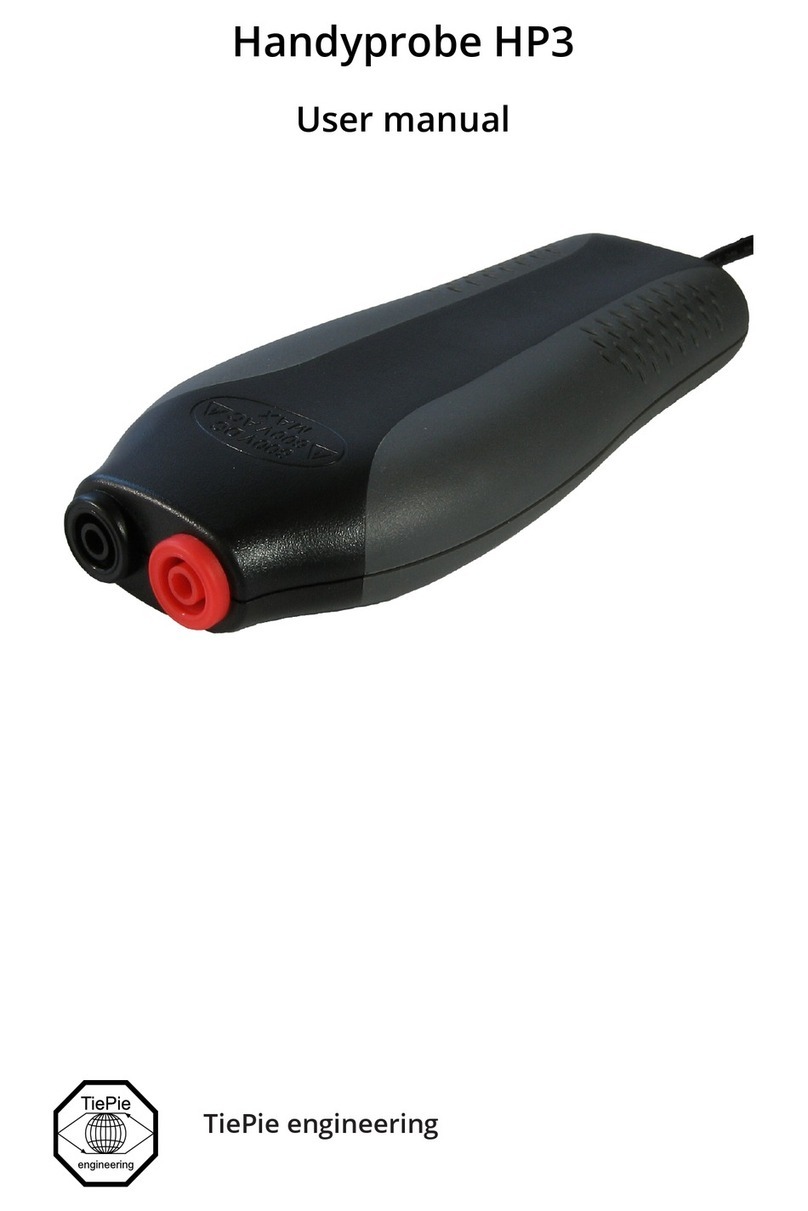
TiePie
TiePie Handyprobe HP3 User manual
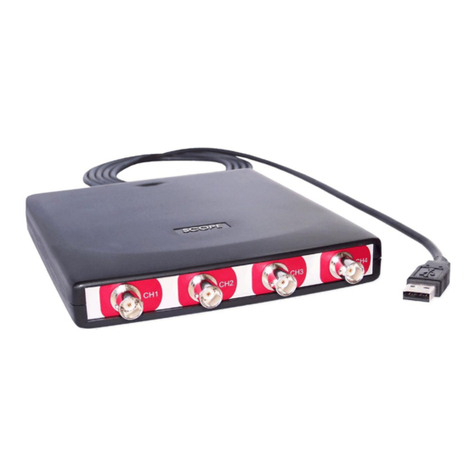
TiePie
TiePie Handyscope HS4 User manual
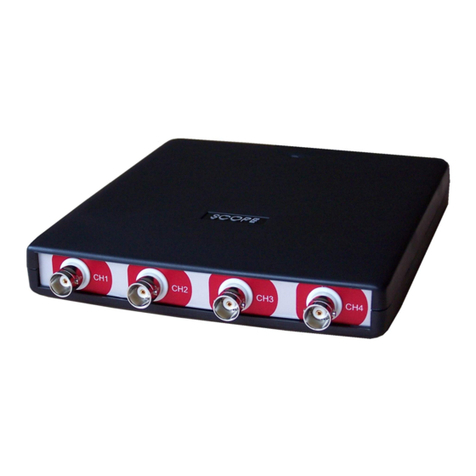
TiePie
TiePie Handyscope HS4 User manual
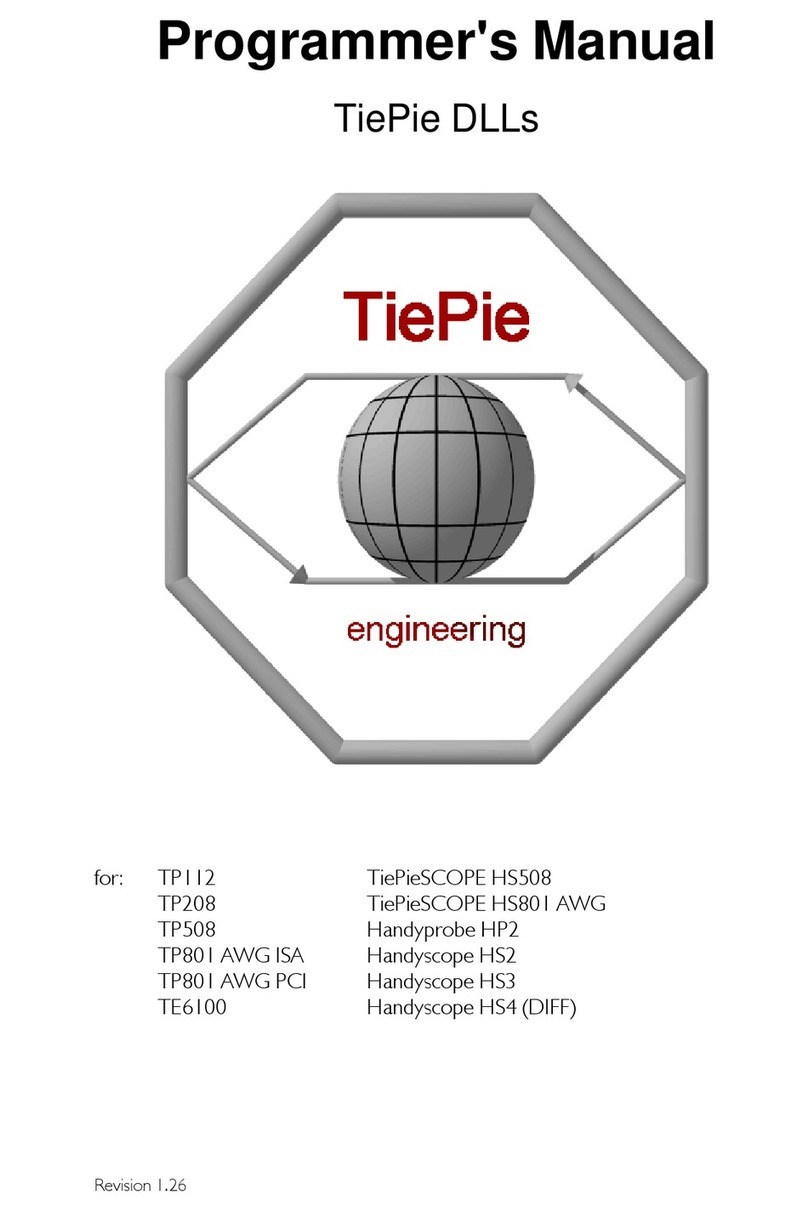
TiePie
TiePie TP112 Operating and maintenance manual
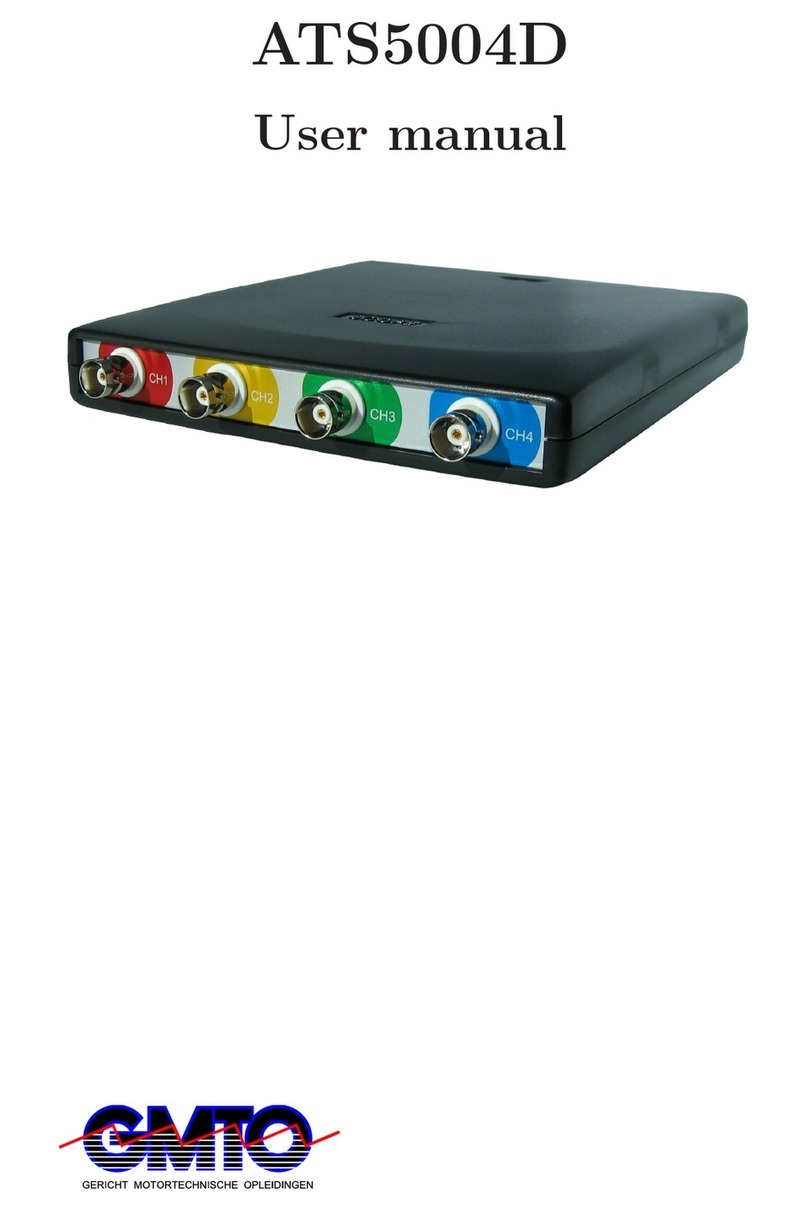
TiePie
TiePie GMTO ATS5004D User manual
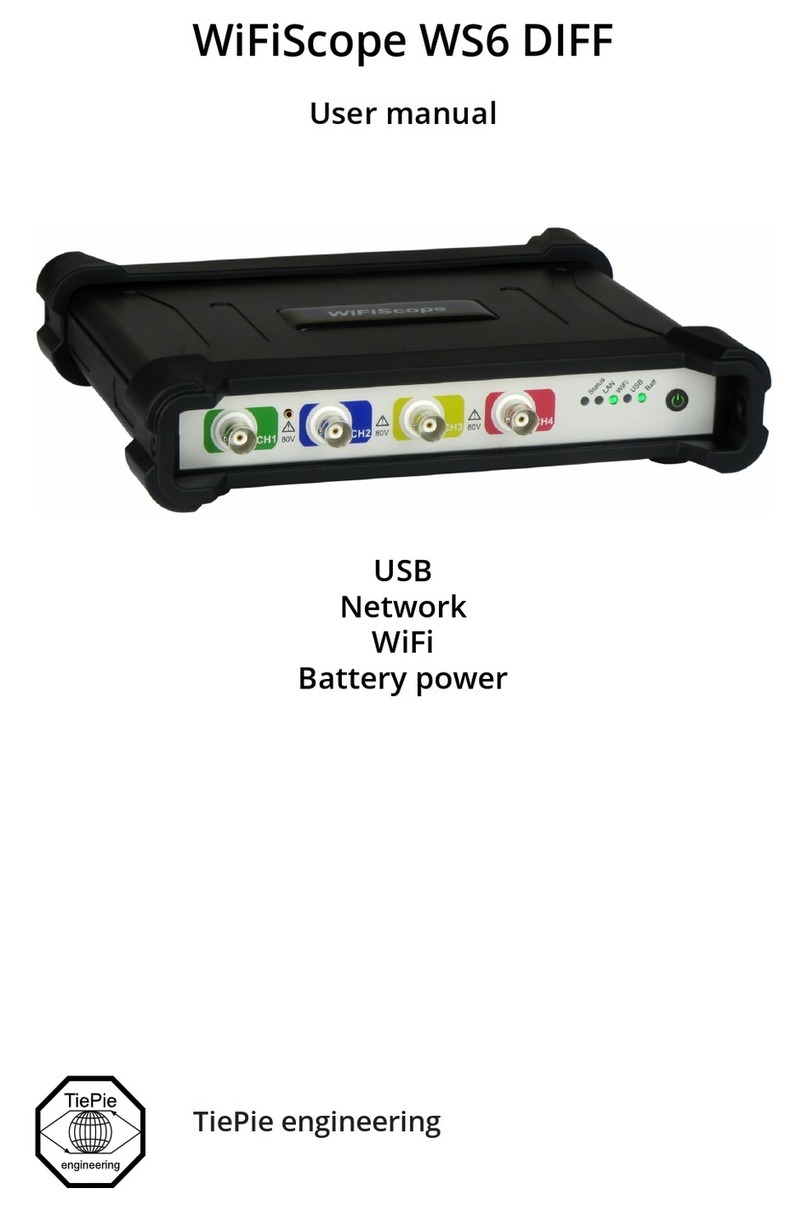
TiePie
TiePie WiFiScope WS6 User manual
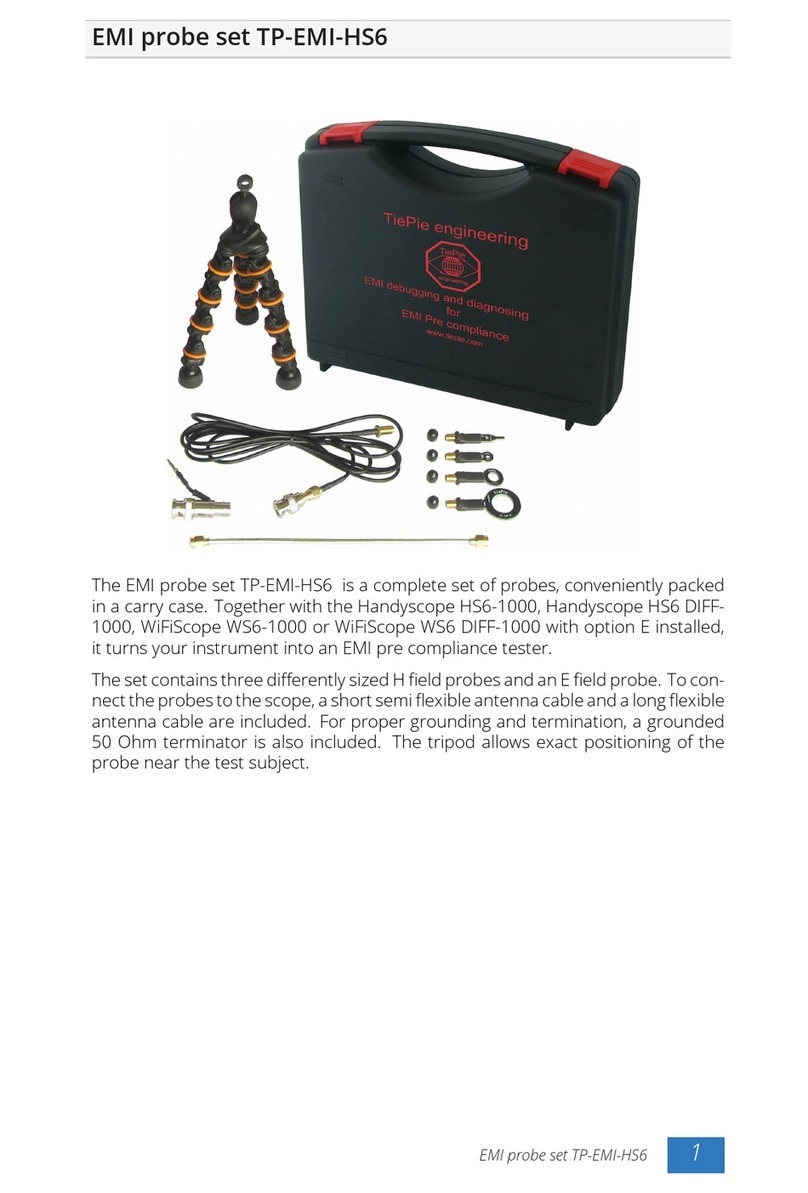
TiePie
TiePie TP-EMI-HS6 User manual
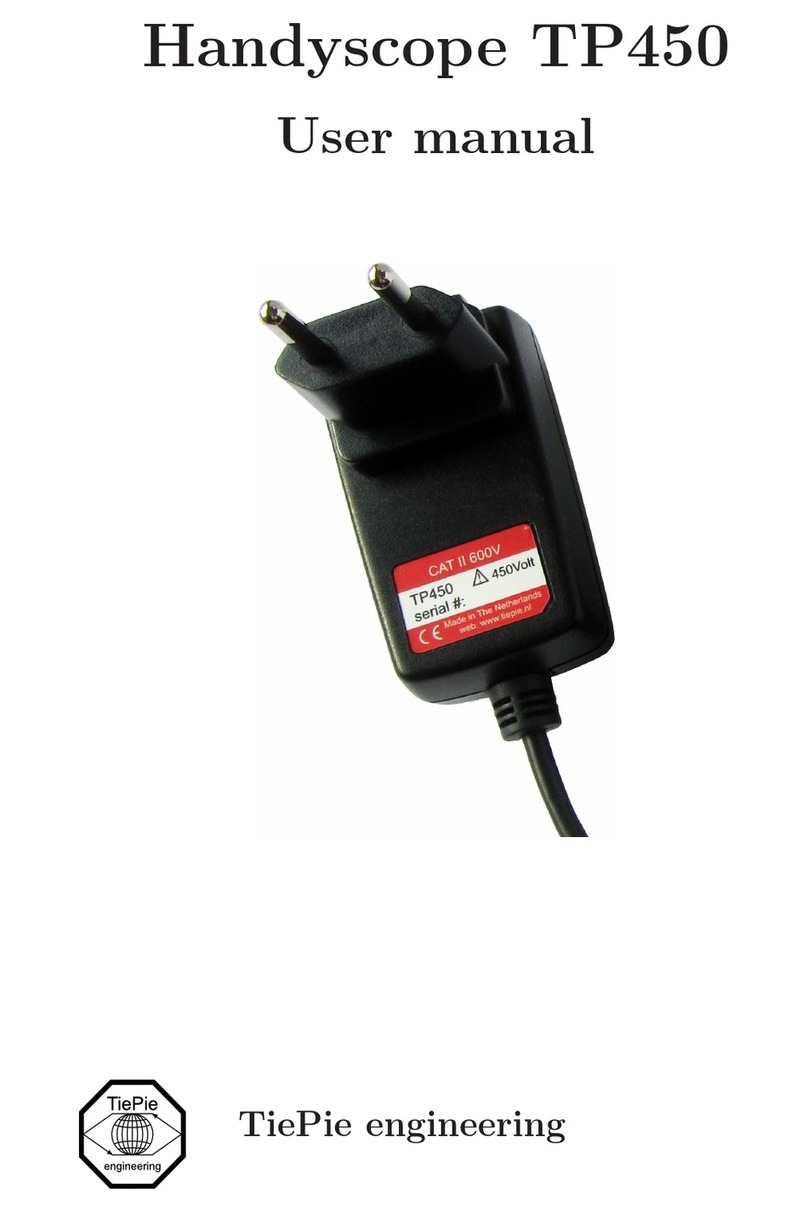
TiePie
TiePie Handyscope TP450 User manual
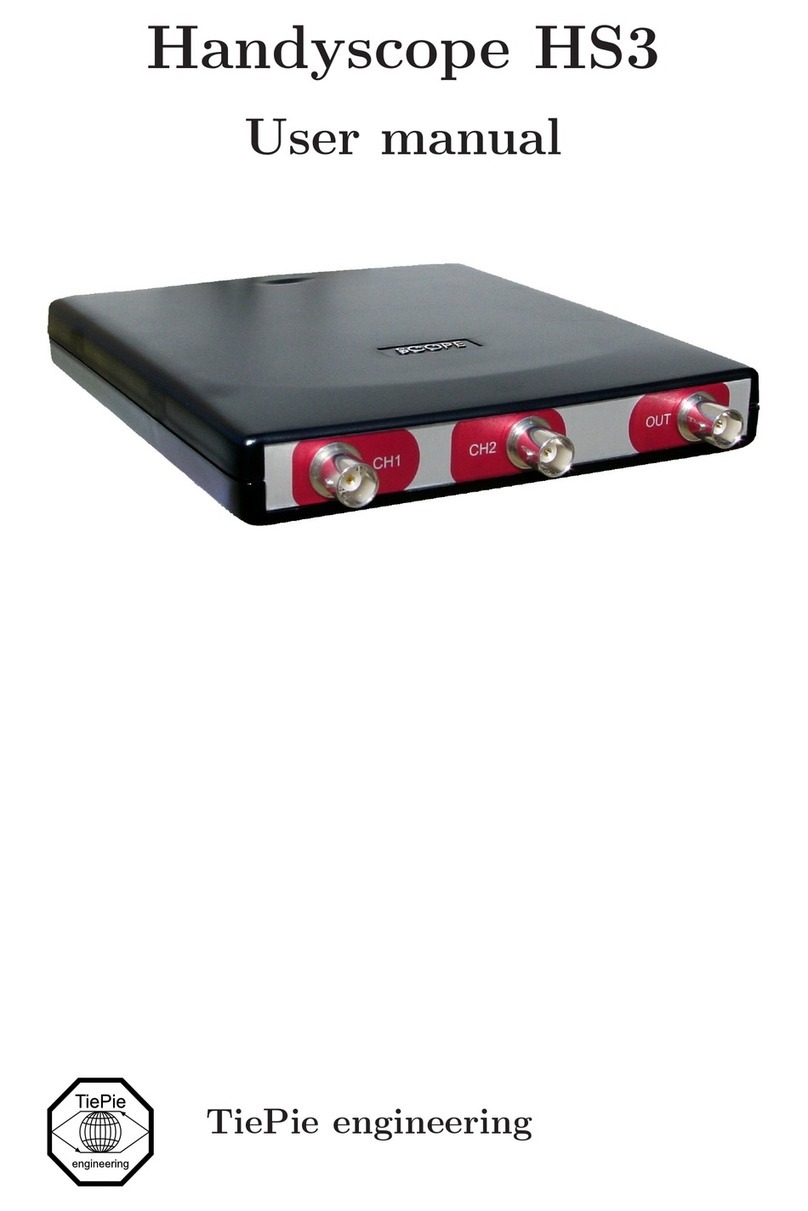
TiePie
TiePie Handyscope HS3 User manual
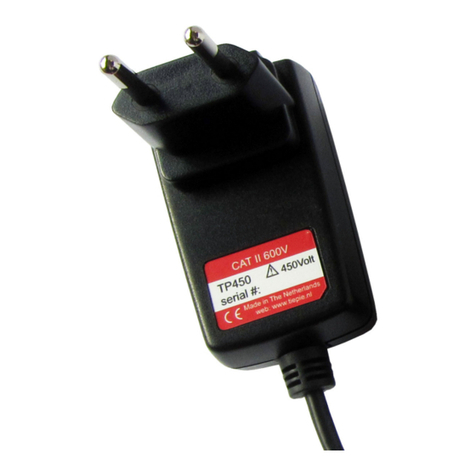
TiePie
TiePie Handyscope TP450 User manual
